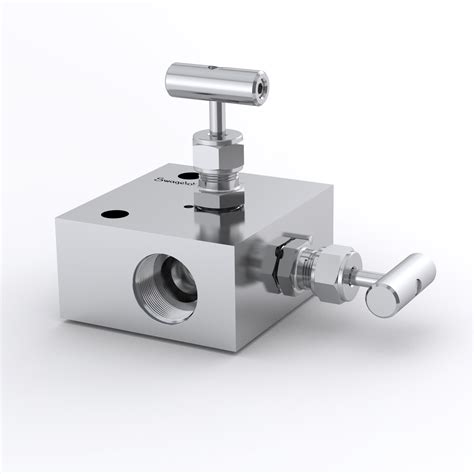Pipe Stem Fitting: For Every Skill Level
Pipe stem fittings, those elegant connectors that join pipes with a graceful curve, are more versatile than you might think. From simple household repairs to intricate plumbing projects, understanding pipe stem fittings opens up a world of possibilities for DIY enthusiasts and professional plumbers alike. This comprehensive guide will explore the different types, applications, and installation techniques, catering to all skill levels.
What are Pipe Stem Fittings?
Pipe stem fittings, also known as pipe saddles or elbow fittings, are essentially connectors that allow you to join two pipes at an angle, often a 90-degree angle. They're typically used to change the direction of a pipe run smoothly and efficiently. Unlike traditional elbows, which are often bulky, pipe stem fittings offer a more streamlined and aesthetically pleasing solution. They are available in various materials, sizes, and pressure ratings, catering to a wide range of applications.
Types of Pipe Stem Fittings
The market offers a diverse selection of pipe stem fittings, each designed for specific purposes and materials:
1. Compression Fittings:
These are popular for their ease of installation and require no soldering or special tools. They use compression rings to create a watertight seal between the pipe and the fitting. Ideal for beginners, they are perfect for smaller diameter pipes in low-pressure applications.
2. Solder Fittings:
Solder fittings offer a more permanent and robust connection, commonly used in higher-pressure systems. They require soldering skills and proper equipment, making them more suitable for experienced DIYers or professionals. The soldered joint ensures a strong, leak-proof connection.
3. Threaded Fittings:
Threaded fittings are joined by screwing the pipe and fitting together. They are versatile and offer a secure connection, especially in applications where disassembly may be required later. They are generally suitable for both low and high-pressure applications depending on the specific fitting and pipe material.
Choosing the Right Pipe Stem Fitting
Selecting the appropriate pipe stem fitting hinges on several critical factors:
- Pipe Material: Ensure compatibility between the fitting material and your pipe material (e.g., copper, PVC, CPVC).
- Pipe Diameter: Match the fitting's diameter to the pipe's inner diameter precisely.
- Pressure Rating: Select a fitting with a pressure rating exceeding the system's maximum operating pressure.
- Application: Consider the intended use of the fitting, factoring in pressure, temperature, and the need for future disassembly.
How to Install Pipe Stem Fittings: A Step-by-Step Guide
The installation process varies depending on the type of fitting:
Compression Fittings Installation (Beginner-Friendly):
- Prepare the Pipe: Ensure the pipe end is clean, smooth, and free from burrs.
- Insert the Compression Ring and Nut: Place the compression ring onto the pipe followed by the nut.
- Insert the Pipe into the Fitting: Push the pipe firmly into the fitting until it's fully seated.
- Tighten the Nut: Tighten the nut firmly using a wrench, ensuring a secure and leak-proof connection.
Solder Fittings Installation (Intermediate/Advanced):
- Prepare the Pipe and Fitting: Clean both the pipe and fitting thoroughly with sandpaper and flux.
- Apply Flux: Apply flux to both the pipe and fitting surfaces.
- Heat and Solder: Heat the fitting with a propane torch until the solder melts and flows smoothly into the joint.
- Cool and Inspect: Allow the joint to cool completely and inspect for any leaks.
Threaded Fittings Installation (Intermediate):
- Prepare the Threads: Clean and lubricate the pipe threads with Teflon tape or pipe sealant.
- Assemble the Fitting: Carefully screw the fitting onto the pipe, ensuring proper alignment.
- Tighten the Fitting: Tighten the fitting using a wrench, taking care not to overtighten.
Troubleshooting Common Issues
- Leaks: Check for proper tightening, clean pipe ends, and correct fitting selection.
- Difficulty Installing: Ensure compatibility of pipe and fitting materials and diameters.
- Stripped Threads: Use appropriate tools and avoid over-tightening.
Frequently Asked Questions
What materials are pipe stem fittings made from?
Pipe stem fittings are manufactured from various materials including brass, copper, PVC, CPVC, and stainless steel, depending on the application and desired properties. Each material offers unique characteristics regarding durability, corrosion resistance, and temperature tolerance.
Are pipe stem fittings suitable for high-pressure applications?
Yes, but the choice depends on the material and pressure rating. Solder fittings and some threaded fittings are typically suitable for high-pressure applications, provided they meet the required pressure rating for the specific system. Always check the manufacturer’s specifications.
Can I use pipe stem fittings on different pipe types?
No, it's essential to use pipe stem fittings compatible with the pipe material. Using incompatible materials can result in leaks or other issues. Check the manufacturer's specifications for compatibility.
How do I choose the right size pipe stem fitting?
The correct size is determined by the inner diameter of your pipe. Matching the fitting's diameter to the pipe's inner diameter ensures a proper and secure fit, crucial to prevent leaks.
How difficult is it to install a pipe stem fitting?
The difficulty varies depending on the type of fitting. Compression fittings are beginner-friendly, while solder fittings require more skill and experience. Threaded fittings are generally manageable for intermediate DIYers.
By understanding the different types, installation techniques, and potential issues associated with pipe stem fittings, both beginners and seasoned professionals can confidently tackle plumbing projects of varying complexities. Remember to always prioritize safety and consult a professional plumber for any doubts or complex installations.

